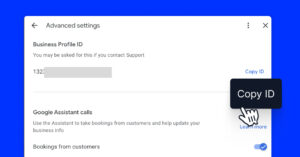Patient reviews can make or break your medical practice in today’s digital-first world, as it’s a service like any other product and service we buy online.
Additionally, doctor reviews by patients are often the first thing prospective clients search for when looking for a doctor—and they heavily influence their decision.
This is even more important for private doctors and medical practices, as solid online reputation management is often the make-or-break factor for their success.
That said, I tell you what you need to know about collecting online reviews and, most importantly, how to ask for patient reviews without being pushy!
Read on to learn why patient reviews matter and how to manage them!
Why are patient reviews important for your medical practice?
At the end of the day, patient reviews are more than just customer feedback—they’re a critical component of your practice’s success.
For instance, did you know that around 95% of customers check online feedback when buying anything online, and the most popular platform for that is Google?
Here are all the reasons why patient reviews of doctors matter:

- Build trust with potential patients – patients often trust online reviews as much as personal recommendations. After all, a strong collection of positive patient reviews reassures them of your expertise and care quality;
- Improve local search rankings – Google rewards any healthcare provider with frequent, high-quality reviews by boosting their local SEO visibility in search results and Google Maps, thus helping you attract more patients locally;
- Identify opportunities for improvement – reviews provide SEO benefits and honest feedback about what patients love and what needs work. You can use this input to make meaningful changes that enhance the patient experience;
- Showcase patient satisfaction – embedding real reviews on your website highlights your practice’s success, offering social proof that attracts;
- Encourage patient loyalty – when patients see you value their feedback and take action based on it, they’re more likely to stay loyal to your practice.
You cannot underestimate the importance of patient reviews, as they are essential for building trust, improving your SEO metrics and visibility, and fostering growth.
7 strategies to get patient reviews from your customers
Collecting patient feedback won’t be a difficult process if you take a thoughtful and consistent approach. Remember: patients are often happy to share their experiences, but they need the right prompts, tools, and motivation to leave a review.
That said, here are 7 strategies to get more patient reviews:
1. Deliver an exceptional patient experience
Providing an exceptional experience is the foundation for earning positive reviews. Happy patients are naturally more inclined to share their satisfaction online.
Practical steps:
- Ensure high-quality care and patient satisfaction by actively listening and addressing patient concerns;
- Train your front-desk staff to offer a warm and welcoming experience from check-in to check-out;
- Follow up with patients after appointments to show you care about their well-being.
Real-world use case:
“For example, a family practice that prioritizes personalized care—like remembering patient names and following up after appointments—could see more patients leaving positive reviews. Small, thoughtful gestures often leave a lasting impression and encourage feedback.”
Pro tip: Personalize the experience by addressing patients by name and remembering small details about their last visit—this builds trust and makes them feel valued.
2. Train & motivate your team
Your team is the face of your practice. Proper training ensures they understand the importance of patient reviews and feel confident requesting feedback.
Practical steps:
- Educate staff about how reviews impact your practice’s reputation and success;
- Role-play scenarios where staff ask for reviews politely and professionally;
- Recognize and reward team members who excel at gathering reviews.
Real-world use case:
“For instance, a clinic that trains its front desk team to request reviews during check-out could see a noticeable increase in feedback. A simple, polite request like ‘We’d love to hear about your experience’ can go a long way.”
Pro tip: Create simple scripts your team can follow or get customer feedback forms before asking for reviews. For example: “We’d love to hear about your experience today. If you have a moment, we’d really appreciate a quick review on Google!”
3. Time your requests right
Timing is everything when it comes to asking for reviews, and the best time to ask is when the patient experience is still fresh and positive.
Practical steps:
- Ask for reviews immediately after a successful appointment or treatment;
- Send automated follow-up texts or emails within 24 hours of the visit;
- Identify moments of satisfaction during the patient journey, such as after a positive conversation or resolution of a concern.
Real-world use case:
“A dermatology clinic, for instance, might send automated SMS requests an hour after appointments. This could lead to a higher response rate, especially among younger patients who respond better to texts.”
Pro tip: Use SMS reminders for younger patients—they’re more likely to respond quickly to text messages than emails.
4. Simplify the review collection process
Patients are busy, so make leaving online reviews as simple and frictionless as possible.
Practical steps:
- Share review links to review platforms like Google Business Profile in texts and emails;
- Display QR codes in your clinic that patients can scan to leave a quick review;
- Offer multiple options, such as Google, Facebook, or Healthgrades, so patients can choose their preferred platform.
Real-world use case:
“Consider a dental practice that places a QR code at the reception desk. Patients could quickly scan the code with their phones and leave a review on Google before leaving the clinic.”
Pro tip: Create a dedicated “Leave a Review” page on your website with direct links to all major review platforms for convenience.
5. Utilize multiple communication channels
Reaching patients on their preferred communication platforms increases the likelihood of receiving reviews.
Practical steps:
- Send personalized emails and SMS review requests with review links;
- Incorporate review requests into appointment confirmations or reminders;
- Use in-person requests as a final touchpoint after appointments.
Real-world use case:
“A physical therapy center that combines SMS, email, and in-person requests might notice a significant improvement in review volume by reaching patients on their preferred channels.”
Pro tip: Segment your communication list based on patient preferences—email for older demographics and SMS for younger, tech-savvy patients.
6. Leverage technology & automation
Automating the review collection process saves your team time and ensures you consistently reach more patients.
Practical steps:
- Use reputation management software to send automated review requests;
- Set up triggers for follow-up emails or texts based on appointment completion;
- Track and manage reviews in one centralized dashboard.
Real-world use case:
“Imagine a cardiology practice automating its review requests. Over time, this could streamline the process and help triple their review collection without adding extra work for the staff.”
Pro tip: Include a direct review link in your automated messages to reduce friction and make it easy for patients to leave feedback quickly.
7. Showcase existing reviews to inspire new ones
Positive reviews not only build trust but also inspire other patients to share their experiences. Highlighting your existing reviews creates a ripple effect.
Practical steps:
- Add patient testimonials to your homepage or “About Us” page;
- Share success stories on social media or in email newsletters;
- Use review widgets to embed feedback from platforms like Google and Facebook.
Real-world use case:
“For instance, a pediatric clinic could add Google review widgets to its homepage. By showcasing glowing reviews, other patients might feel inspired to share their own positive experiences.”
Pro tip: Rotate your top-performing reviews regularly so returning patients see fresh, positive feedback.
Utilize review management software like EmbedSocial
Perhaps the best thing you can do when it comes to collecting reviews for your website is to subscribe to an advanced review management platform.
One of the best options is EmbedSocial—modern reviews management software that uses AI to help you generate, manage, and display reviews:

To help you get and analyze all your social reviews on your website in seconds, EmbedSocial comes equipped with plenty of advanced features:
- Official API integrations with all popular social networks, including Facebook, Google, Instagram, and more, plus custom review sources;
- Customizable and mobile-responsive widgets that come with ready-to-go templates for all use cases and offer different layouts and options;
- Advanced moderation and filtering options that let you showcase a select number of reviews based on pre-set filters or by manually choosing them;
- Easy collection of reviews via various methods, such as SMS and email review requests, via popup widgets, review buttons, and website forms;
- Aggregated star ratings for your products on Google in the form of rich SEO snippets displayed below your brand’s search results;
- AI-powered review management tools that help you collect and respond to reviews, including an AI summarizer, review responder, and a writing assistant;
- Multi-location review management in one dashboard, which lets you connect all of your review locations and pull feedback from every location at once;
What else would you need to manage your brand’s online reputation?
Requesting patient reviews: 7 best practices
When asking for patient reviews, you must find a good balance between professionalism and persistence. That said, here are a few best practices to encourage great feedback in a way that feels natural and respectful:

- Personalize your approach—tailor your requests to individual patients and express genuine appreciation for their feedback;
- Maintain professionalism & compliance—avoid incentives that could violate regulations and ensure compliance with healthcare and review platform guidelines;
- Respond to each review you receive—you must learn how to respond to patient reviews, as addressing positive feedback with gratitude is as important as handling negative reviews constructively and professionally;
- Make it part of the patient journey—integrate review requests seamlessly into the patient experience, such as by adding review links to your appointment follow-up emails or text messages or by including a QR code at checkout;
- Educate patients on the impact of their feedback—you should explain how reviews help both your practice and future patients;
- Consider the legal & ethical implications—familiarize yourself with the relevant patient privacy laws (e.g., HIPAA compliance) and follow ethical guidelines;
- Don’t be pushy when asking for reviews—most importantly, keep your requests polite and professional to avoid making patients uncomfortable.
Carefully consider all these best practices, as getting new reviews strengthens your online reputation and builds lasting trust with your patients.
What is the best site for doctor reviews?
Whenever you get reviews, you must ensure they are displayed on the best doctor review sites, as prospective patients will check them out.
To help you prioritize, here’s an overview of the top doctor ratings sites, why they matter, and what you can do to maximize their potential.
1. Google Business Profile (Google Reviews)
Google Reviews are the most visible and influential because they appear directly in search results and Google Maps, giving your practice the widest reach:

What to do:
- Claim and verify your Google Business Profile.
- Update your information (hours, location, services) and respond to reviews.
- Use tools like EmbedSocial to monitor and showcase your Google reviews.
2. Healthgrades
Healthgrades is a leading healthcare services review site where millions of patients go to find and rate doctors, making it essential for medical practices:

What to do:
- Claim your profile to ensure accuracy.
- Add photos, services, and professional credentials.
- Encourage happy patients to leave feedback here.
3. Vitals
Vitals focuses on connecting patients with doctors by displaying reviews, credentials, and wait-time information—critical for patient decisions:

What to do:
- Claim your Vitals profile and update all details.
- Respond to both positive and negative reviews.
- Monitor feedback to understand patient sentiment.
4. Zocdoc
Zocdoc is not just a review site but also allows patients to book appointments directly, making it a great platform for conversions:

What to do:
- Optimize your Zocdoc profile with accurate information.
- Encourage reviews after appointments.
- Use reviews to highlight patient satisfaction.
5. RateMDs
RateMDs is another trusted platform where patients search for doctors and leave feedback based on experience, location, and specialties:

What to do:
- Claim and personalize your profile with current information.
- Respond to reviews and address concerns professionally.
- Share a direct link to your RateMDs page for easy access.
How to manage your presence across multiple review sites?
Managing reviews on multiple platforms can be time-consuming, but it’s essential for building trust and attracting new patients.
- Claim all your profiles – ensure you own your listings on Google, Healthgrades, Vitals, and other key platforms.
- Keep information updated – ensure contact details, working hours, and services are accurate across every platform.
- Monitor reviews regularly – use tools like EmbedSocial to centralize review management and respond to feedback promptly.
By focusing on these top doctor review sites, you can ensure your practice stands out where it matters most—right in front of prospective patients.
Conclusion: Get more reviews to grow your practice!
Patient reviews are the backbone of a thriving medical practice, and you have to consistently encourage your patients to provide you with new ones, especially if you are representing a new healthcare provider trying to build a good reputation.
How do we ask for patient reviews? You might wonder.
Well, by delivering exceptional experiences, simplifying the review process, and leveraging technology, you can encourage more patients to share their feedback.
Remember: each review builds trust, improves your visibility in Google Maps, and helps you attract new patients. So, try to implement the above strategies consistently, if you want to see the impact on your practice’s reputation and growth. The sooner you do it, the better!
FAQs about getting more patient reviews
How do I reach more patients?
To reach more patients, optimize your Google Business Profile for local SEO, ensure your practice appears in Google Maps, and encourage satisfied patients to leave reviews. Also, use social media, paid ads, and patient referrals to expand your reach further.
How to gather patient feedback?
Gather patient feedback by sending follow-up emails or text messages with direct links to review platforms like Google or Healthgrades. Use in-clinic QR codes, automated review tools, and short surveys to make the process quick and easy.
How to get patients to leave Google reviews?
Ask for reviews politely after an appointment, provide a direct Google review link, and follow up with a personalized text or email. Timing is critical—reach out when the patient experience is still fresh. Adding QR codes or automating requests can also help.
What is the most reliable doctor review site?
Google is the most widely used and reliable platform for doctor reviews due to its reach, visibility in search results, and integration with Google Maps. Other trusted platforms include Healthgrades, Zocdoc, and Vitals, which specialize in healthcare-specific reviews.
How can I manage reviews for multiple locations efficiently?
Using GBP software tools like EmbedSocial, you can aggregate reviews from all your locations into one centralized platform. This means you no longer need to log in to multiple Google Business Profiles or social media accounts. You can view, manage, and respond to all reviews in one place, saving time and ensuring consistency across locations.







